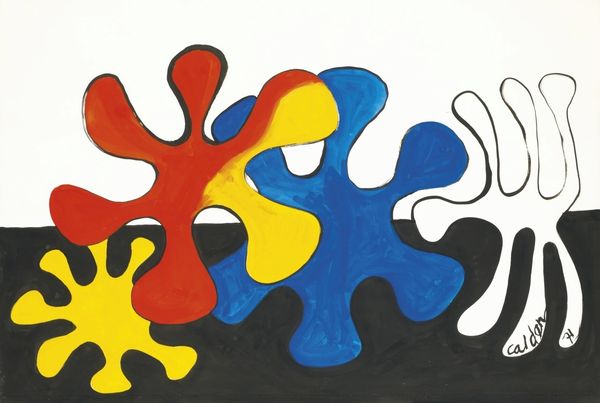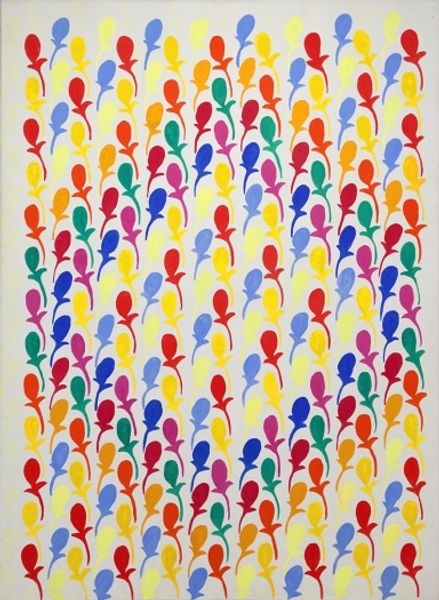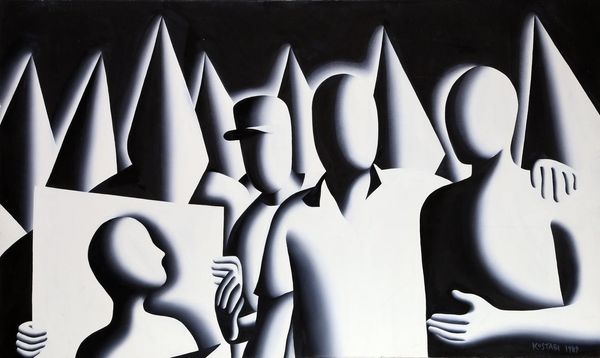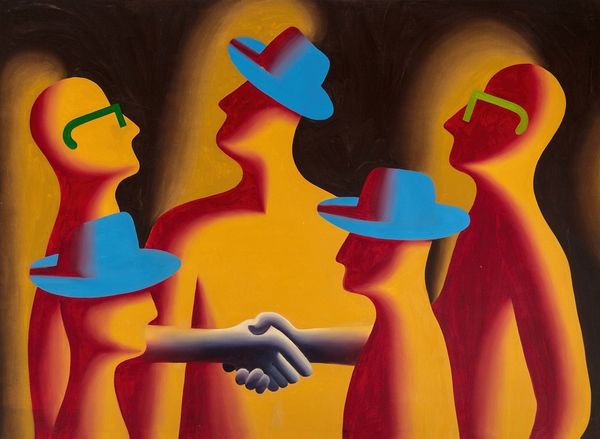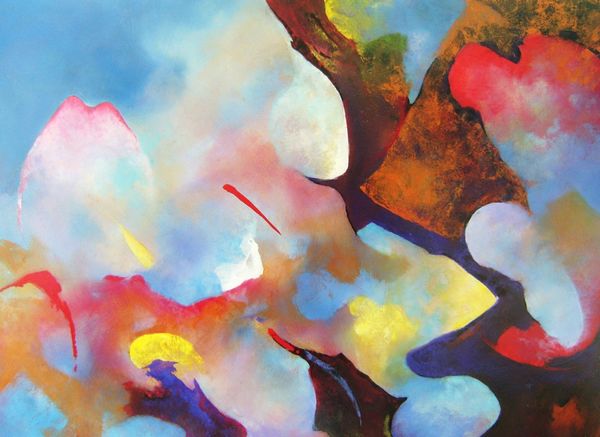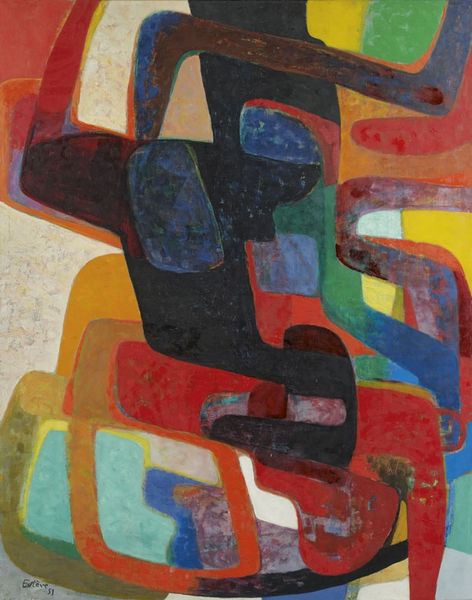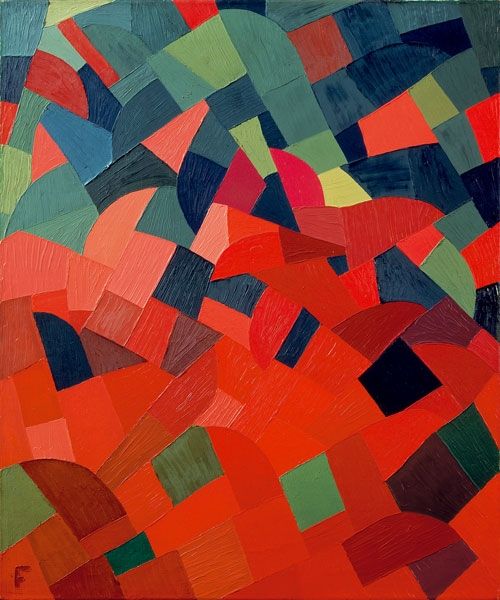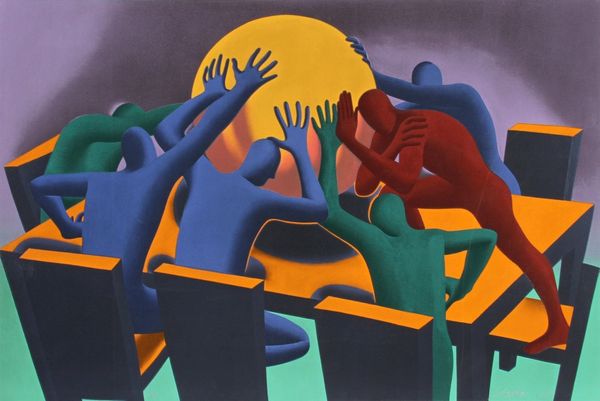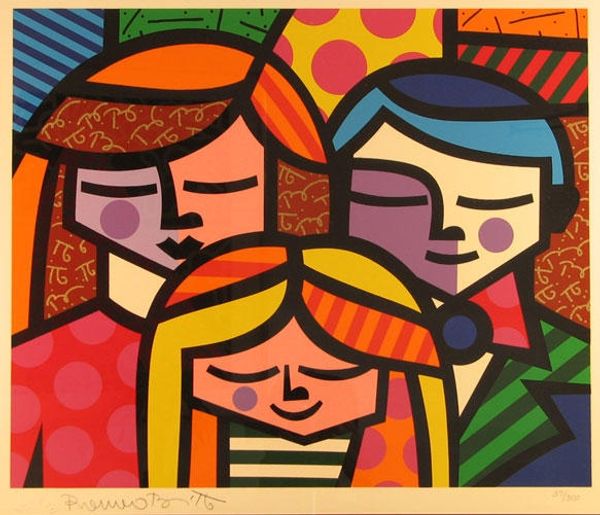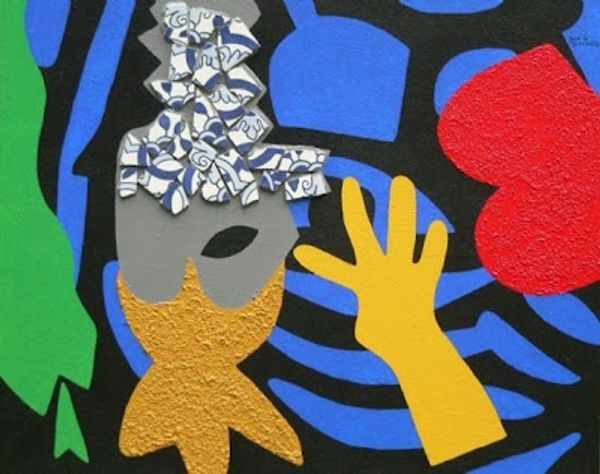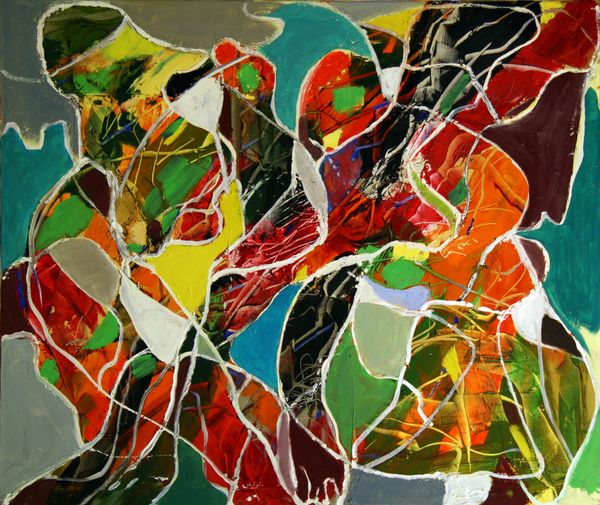
Copyright: Modern Artists: Artvee
Editor: This is "Pacific Telesis" by Mark Kostabi, painted in 1989 using acrylic paint. The hands in a multitude of hues against the black backdrop certainly draw your eye in; they are so bold, especially with the surrealist echoing effect! How would you unpack this work? Curator: Looking at the materials and process here is crucial. The slick, almost manufactured feel of acrylic paint, combined with the repetition and stark coloration, speaks to a society increasingly mediated by technology and mass production. Kostabi used "assistants" to make his paintings; it resembles industrial methods! How does that idea affect your interpretation? Editor: I guess it's deliberately distancing. So, the title – Pacific Telesis – was that a real company? It deepens that association, then. Were the hands meant to symbolize labor? Curator: Exactly. Pacific Telesis was a phone company. The multiple hands, all reaching, could represent the labor force feeding the telecommunications machine. Note the absence of individual features: these are anonymized hands, almost robotic. The medium reflects the message. Are they empowered, or are they grasping for something unattainable? Editor: That reading adds a cynical layer I didn't see at first. It's unsettling to think of them as anonymous tools, which the method behind production appears to validate. Curator: Indeed! And this critique of corporate culture through its very modes of production became Kostabi's trademark during this period, further challenging the perceived value of 'unique' art objects. Reflecting on the hands themselves; the materiality almost mimes the reach and grasp for material gains. Editor: So, by understanding Kostabi's materials and manufacturing process, the painting becomes more than just colorful hands – it's a statement about late 20th-century labor, capital, and a growing telecom empire. Thanks for showing me this new point of view. Curator: Precisely! The key lies in observing how the artist’s process actively contributes to, or even becomes, the art’s central argument. It is the physical, social, and symbolic that intersect here.
Comments
No comments
Be the first to comment and join the conversation on the ultimate creative platform.
